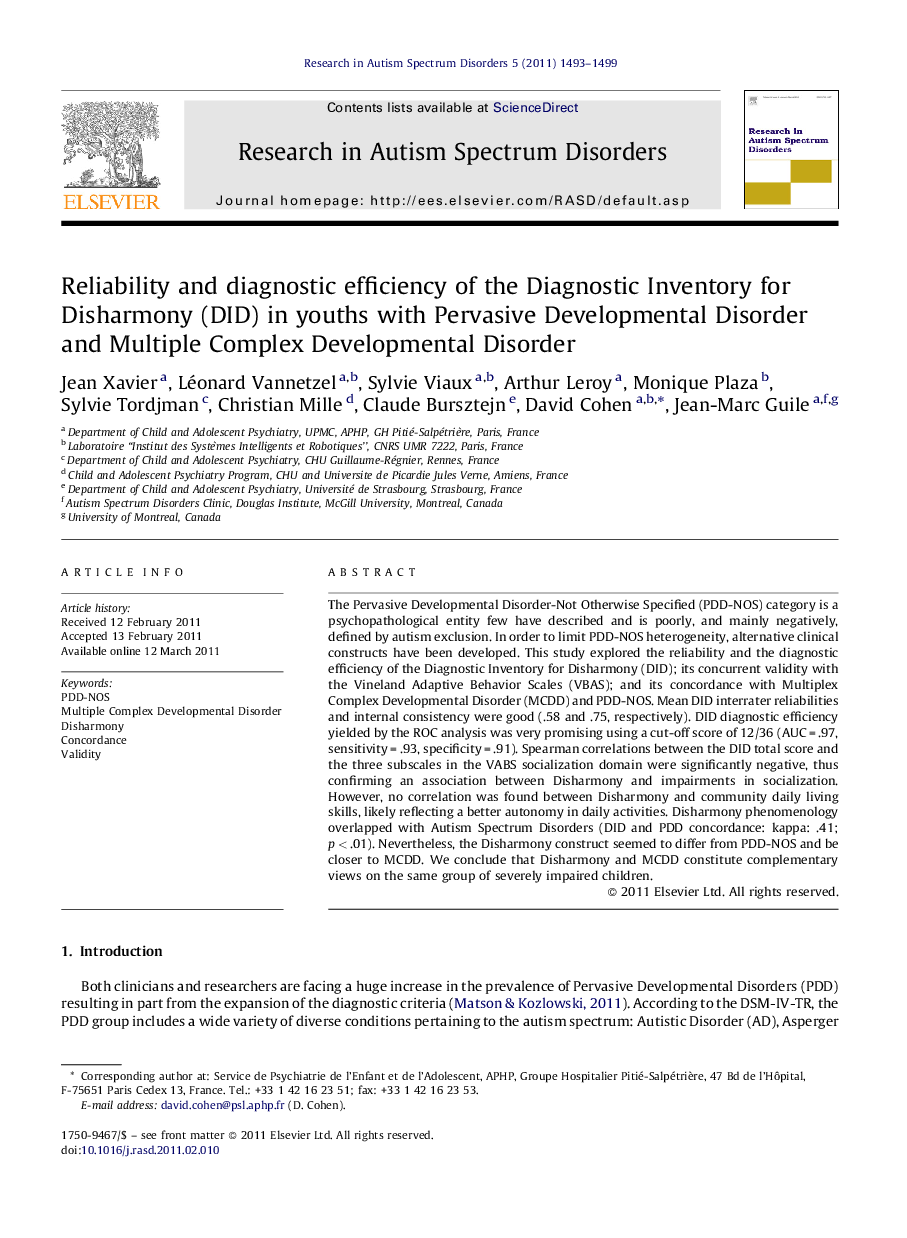| کد مقاله | کد نشریه | سال انتشار | مقاله انگلیسی | نسخه تمام متن |
|---|---|---|---|---|
| 370663 | 621880 | 2011 | 7 صفحه PDF | دانلود رایگان |

The Pervasive Developmental Disorder-Not Otherwise Specified (PDD-NOS) category is a psychopathological entity few have described and is poorly, and mainly negatively, defined by autism exclusion. In order to limit PDD-NOS heterogeneity, alternative clinical constructs have been developed. This study explored the reliability and the diagnostic efficiency of the Diagnostic Inventory for Disharmony (DID); its concurrent validity with the Vineland Adaptive Behavior Scales (VBAS); and its concordance with Multiplex Complex Developmental Disorder (MCDD) and PDD-NOS. Mean DID interrater reliabilities and internal consistency were good (.58 and .75, respectively). DID diagnostic efficiency yielded by the ROC analysis was very promising using a cut-off score of 12/36 (AUC = .97, sensitivity = .93, specificity = .91). Spearman correlations between the DID total score and the three subscales in the VABS socialization domain were significantly negative, thus confirming an association between Disharmony and impairments in socialization. However, no correlation was found between Disharmony and community daily living skills, likely reflecting a better autonomy in daily activities. Disharmony phenomenology overlapped with Autism Spectrum Disorders (DID and PDD concordance: kappa: .41; p < .01). Nevertheless, the Disharmony construct seemed to differ from PDD-NOS and be closer to MCDD. We conclude that Disharmony and MCDD constitute complementary views on the same group of severely impaired children.
Research highlights
► The study documents the reliability and the diagnostic efficiency of the Diagnostic Inventory for Disharmony (DID).
► The DID showed a good diagnostic efficiency and a good concurrent validity with the Vineland Adaptive Behavior Scales.
► Its concordance with Multiplex Complex Developmental Disorder (MCDD) was significant but not with PDD-NOS.
► Disharmony and MCDD constitute complementary views on the same group of severely impaired children.
Journal: Research in Autism Spectrum Disorders - Volume 5, Issue 4, October–December 2011, Pages 1493–1499